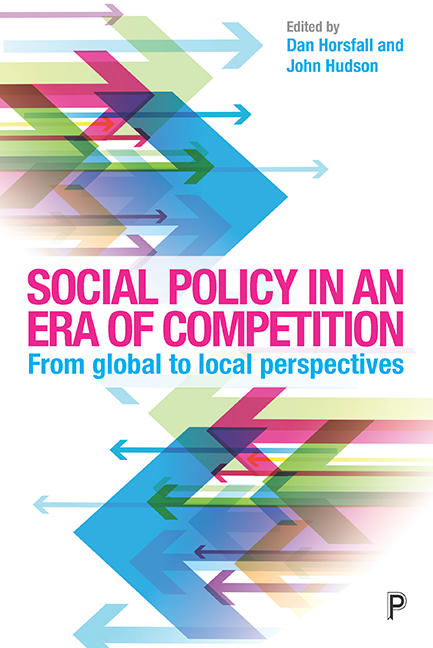Book contents
- Frontmatter
- Contents
- List of figures, tables and boxes
- List of contributors
- List of abbreviations
- Introduction: social policy in an era of competition
- Part One Global competition as the context for welfare
- Part Two The impact of intensifed competition on local governance
- Part Three The reframing of welfare discourses in an era of competition
- Part Four Conclusions
- References
- Index
two - Changing labour markets, changing welfare across the OECD: the move towards a social investment model of welfare as a response to competition
Published online by Cambridge University Press: 05 April 2022
- Frontmatter
- Contents
- List of figures, tables and boxes
- List of contributors
- List of abbreviations
- Introduction: social policy in an era of competition
- Part One Global competition as the context for welfare
- Part Two The impact of intensifed competition on local governance
- Part Three The reframing of welfare discourses in an era of competition
- Part Four Conclusions
- References
- Index
Summary
The rise of the social investment model in the OECD?
The notion of a ‘social investment welfare state’ has gained increasing ground over recent years (Morel et al, 2012a), playing an important role in the discourse of international organisations such as the OECD and EU (Mahon, 2013; Deeming and Smyth, 2015). As Taylor-Gooby et al (2015, pp 83–4) note, it forms of one a number of concepts – others include ‘active social welfare’, the ‘new welfare state’ and ‘new risk welfare’ – that might be grouped under the label ‘new welfare’. All are based around a shared view that developed welfare states have begun to place less emphasis on income protection and more emphasis on investing in human capital. Put differently, they stress the growing importance of the ‘productive’ (as opposed to ‘protective’) elements of social policy (compare Hudson and Kuhner, 2009), chiefly on the basis that this may square the circle of maintaining social expenditures while responding to increased economic competition. Indeed, as Deeming and Smyth (2015, p 298) put it ‘“Social investment” arguably represents the very latest justification for social policy to guide the development of the economy and society in the twenty-first century.’
Jenson (2010, p 62) argues that the social investment perspective breaks with past understandings, ‘represent[ing] an approach to social policy different from the social protection logic of post-1945 welfare regimes as well as the safety-net stance of neoliberals’, but notes rather different models have been advocated and implemented in practice, such as Giddens’ (1998) Third Way-rooted ‘social investment state’ and Esping-Andersen's (2002) more expansive Nordic child-centred social investment model. Other scholars have made similar observations. For instance: Deeming and Smyth (2015) draw a distinction between a liberal ‘light’ and Nordic ‘heavy’ social investment strategy; Morel et al (2012c) differentiate between social investment strategies that are matched with strong social protection and those that are not; and Mahon (2103) identifies a ‘neoliberal variant’ along with ‘inclusive liberal’ and ‘social democratic’ versions of social investment.
- Type
- Chapter
- Information
- Social Policy in an Era of CompetitionFrom Global to Local Perspectives, pp. 33 - 52Publisher: Bristol University PressPrint publication year: 2017



